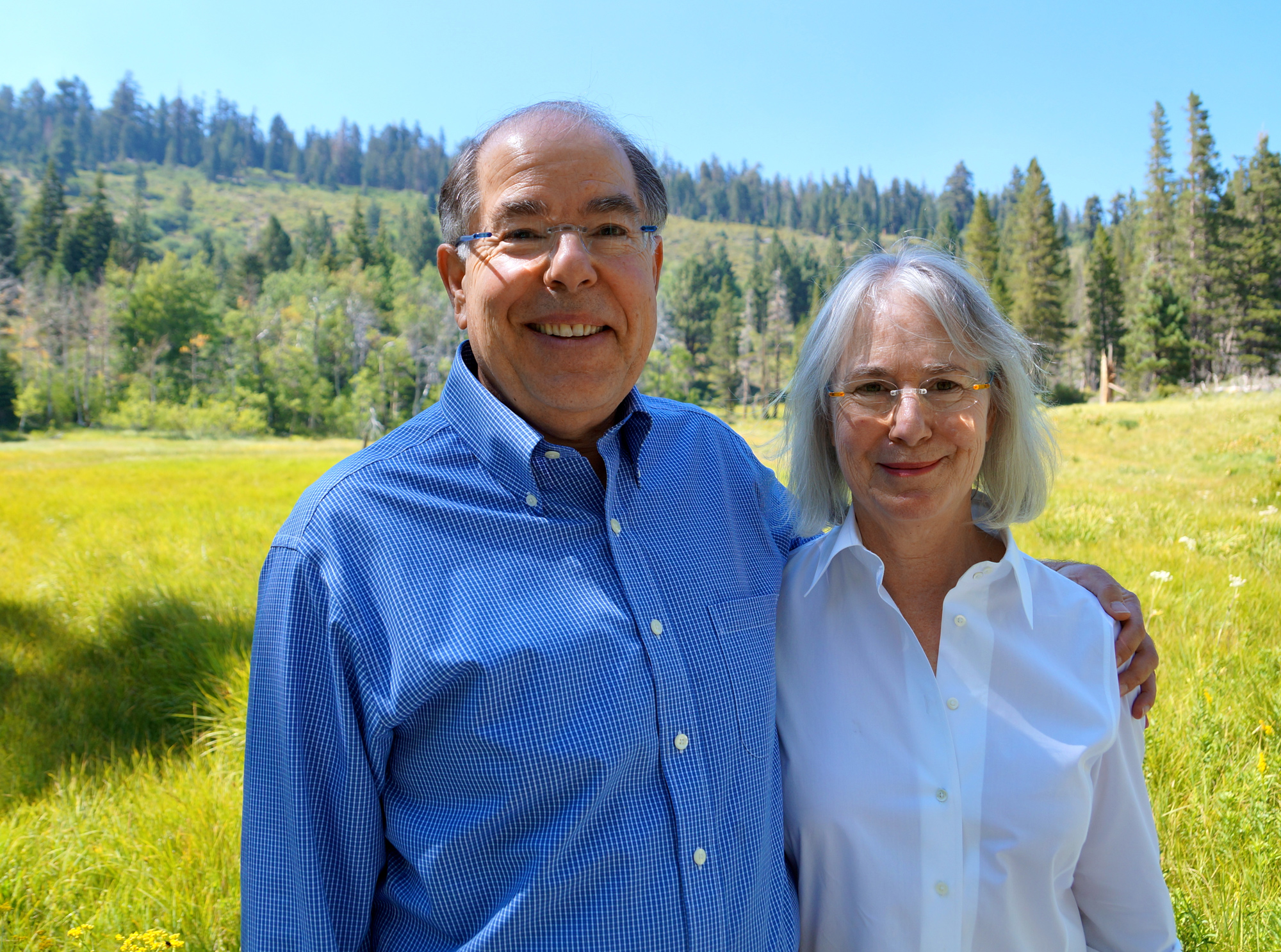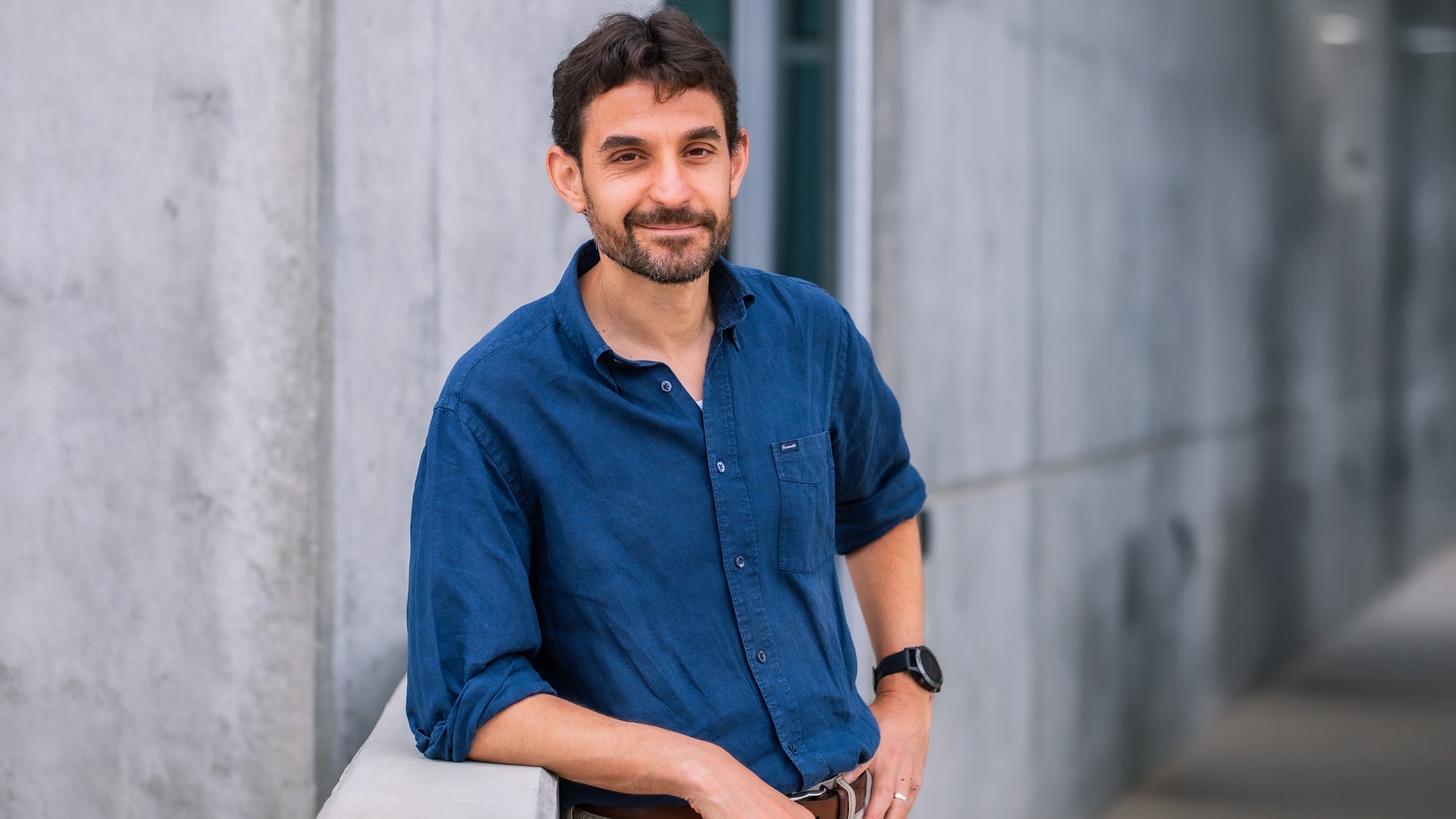
High Tech in the High Sierra
As the legend holds, a violent escape from Nevada State Prison in 1871 concluded in a true-life Wild West shootout in California, not far from Mammoth Mountain. The immediate surroundings were renamed accordingly –– Convict Creek, Convict Lake and Mount Morrison, after a slain member of the posse that ambushed the inmates.
Today, the site of that gun battle –– inspiration for the 1951 film "The Secret of Convict Lake" and long part of local lore here –– is serene as can be. Just a dusty mile's drive off U.S. 395 on the state's eastern edge, an assemblage of tan buildings sitting alongside Convict Creek comprise the UC Santa Barbara-run Sierra Nevada Aquatic Research Laboratory (SNARL).
Together with Valentine Camp, another UCSB-managed field station up the road, SNARL is among the university's most prolific sources of research. The pair make up the Valentine Eastern Sierra Reserve, part of the University of California's 38-site Natural Reserve System (NRS), which boasts more than 750,000 acres of protected natural land and is the largest of its kind in the world.
UCSB administers seven reserves –– the most of any of the UC campuses –– including Coal Oil Point on the coast just off campus and Sedgwick Reserve in Santa Barbara County's wine country. Valentine and SNARL are its farthest-flung.
Known for ecological fieldwork and investigation, home to several resident researchers and host of 30 to 40 visiting university classes each year, the Mammoth sites are beloved by scientists and nature lovers alike. That includes Paul and Kate Page. The outdoor enthusiasts and Mammoth locals are longtime, devoted donors –– of time and money –– to the sites that Kate Page collectively refer to as "the gem of Mammoth."
With a dozen-year history of gifting cash, goods and good old-fashioned elbow grease to the Valentine Reserves, the couple's latest pledge will help give SNARL something it has long been lacking: a proper multiuse classroom/lecture hall. Some 25 years after the need for such a space was first identified, SNARL is getting a high-tech, future-ready new building to serve as a lecture hall and gathering place for scientists, instructors and students. It will be named for the Pages, in recognition of their lifetime philanthropy to the reserves.
"With this generous gift from Paul and Kate Page, the new classroom at the SNARL Reserve will be a showcase for advancing educational technology at field stations," said UCSB's NRS director Patricia Holden, a professor at the Bren School of Environmental Science & Management. "The 38 natural reserves are the University of California's systemwide vehicles for directly educating and researching about California's diverse ecosystems. The seven reserves that UCSB manages are vibrant, diverse settings where the overall UC NRS mission thrives. Technologically connecting students at our reserves to the broader world is one powerful way that we can expand our educational reach, and we are so thrilled that Paul and Kate Page are uniquely enabling that to happen at SNARL."
The original lab and residence at SNARL date to 1935, when the Convict Creek Experiment Station, as it was then known, was opened as a joint effort of the California Department of Fish and Game and the U.S. Bureau of Sport Fisheries and Wildlife to conduct trout stream research. The site's other buildings –– there are 12 in all –– went up in the ensuing years. The lab was renovated in 2011. Once completed, the classroom/lecture hall will stand out as SNARL's newest addition.
"Going into this, I said to Paul, ‘What if we try to make this the most modern, tech-advanced classroom we could, and to think really hard about how to prepare the building for future upgrades so that it remains cutting-edge well into the future?'" recounted Dan Dawson, director of SNARL and Valentine. "Knowing that the hardware is going to change very rapidly, the most important thing is putting in the right infrastructure –– power, conduits, cables and connectors –– so that the next new idea will be easy to implement."
Advanced audio, video and lighting components and a high-speed fiber Internet connection are all in the plans for the flexible space that will seat as many as 120 people in theater-style configuration, or be set up with workgroup tables for classroom use. It also will be as green as possible.
"The impact on the environment, or lack thereof, is the other important feature of this project," Dawson said. "We're trying to make this a net-zero energy building by using a combination of ground-source heating and cooling and photovoltaic energy generation. We're also looking at a sustainability rating of at least LEED gold, but net-zero energy is even more significant. We're working toward that objective."
The design as it stands is for a 2,760-square-foot building that includes a lobby, restrooms and storage in addition to the primary meeting room that could, at times, be split into two rooms with a partition. It also will feature a large patio that links it with SNARL's existing dormitory, providing a social area between the two buildings.
The current timetable calls for breaking ground in spring 2014 and ribbon cutting one year later, around April 2015.
"I see this project as completely evolving the way in which this field research station will be used in the future," said Paul Page, a retired technology entrepreneur. "It changes the dynamics, in my opinion. All this time, they haven't had an effective place where teachers and students and researchers could meet and collaborate. The technology is what fascinates me; that's my enthusiasm. Classroom technology is accelerating as fast as the smartphone revolution. I'm working with Dan on that aspect: What is state-of-the-art in classroom tech now, where is it headed, and how can we provide that in this new room?"
The Pages' generosity to UCSB's Mammoth area reserves has included funds for a classroom at Valentine and, for Kate, volunteering every year at a Valentine-hosted, seasonal outdoor education program for kids. They have made annual gifts for operational support and multiple in-kind gifts of computer equipment and peripherals. Paul Page has rolled up his sleeves to help Dawson solve database issues and to videotape public lectures at SNARL. They worked with Dawson and his wife, Leslie, to launch a fundraising committee –– the Valentine Reserve Fund –– on which they still sit.
"Paul and Kate Page are my strongest supporters and longest-standing donors," Dawson said. "They are very engaged in everything we do and they know our program and what we do at the reserve better than anyone. Their role here has been significant, and this new classroom will commemorate that."
Their latest endeavor at SNARL –– the tech piece in particular –– is an ideal fit for the pair of UCLA grads who retired young to Mammoth in the late 1980s: Paul Page launched and sold, successively, two high-tech startups before such things were remotely common, back when the south Bay Area was first coined Silicon Valley. As he himself put it, "I was working on microchips and microcomputers before PCs even existed."
Settling into Mammoth and returning less and less frequently to Los Angeles, the Pages began feeling a pull to contribute to their adopted community. They found their cause, and their passion, after a chance invite to Valentine Camp (it is closed to the public) –– and they've never looked back.
"When we finally were able to connect with the reserve –– the more we learned about it and Dan and Leslie and the projects there, things really clicked," Kate Page said. "It's a unique resource to have this field station right where research is being done here in the mountains. And understanding that the UC budget was limited, it makes all the sense in the world to try to help that activity be as successful as possible."
[RETURN TO TOP] † Left to right: Daniel Dawson, Paul Page, Patricia Holden and Kate Page look over the site where SNARL's high-tech new facility will be built. The structure will be named for the Pages, in honor of their generosity to the reserve. Credit: George Foulsham.
Related Links
Valentine Eastern Sierra Reserve
UC Santa Barbara Natural Reserve System
UCSB Giving



